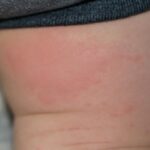Leukocyte Adhesion Deficiency (LAD) is a group of rare genetic disorders characterized by impaired leukocyte function, significantly impacting the body’s immune response. While primarily known for its association with recurrent infections and neutrophilia, a less widely recognized but crucial clinical feature, especially in newborns, is delayed umbilical cord separation. This article will explore the connection between delayed umbilical cord separation and LAD, emphasizing its importance in the differential diagnosis and highlighting the underlying mechanisms based on current medical understanding.
Leukocyte Adhesion Deficiency arises from defects in the adhesion molecules on the surface of leukocytes, which are essential for their migration to infection sites and proper immune function. The most common form, LAD-I, is caused by mutations in the CD18 gene, encoding the beta subunit of β2 integrins. These integrins are critical for leukocyte adhesion to endothelial cells and subsequent extravasation into tissues to fight infection. In LAD-I, the deficiency of functional β2 integrins leads to a cascade of immunological consequences, including the inability of neutrophils to effectively migrate to sites of inflammation.
Delayed umbilical cord separation, typically defined as separation occurring beyond 3 weeks of life, is a noticeable sign in newborns and infants with LAD-I. The normal process of umbilical cord separation relies on neutrophil infiltration and enzymatic degradation of the cord tissue. In infants with LAD-I, the impaired neutrophil migration due to adhesion defects directly hinders this process. Consequently, the umbilical cord stump persists for a prolonged period, often beyond the typical timeframe.
It is critical to understand that while delayed umbilical cord separation is a significant indicator for LAD-I, it is not exclusive to this condition. The differential diagnosis for delayed umbilical cord separation is broad and includes various other conditions such as local infections (omphalitis), metabolic disorders, and rare syndromes. However, in the context of recurrent infections, especially skin and mucosal infections without pus formation, accompanied by persistent marked neutrophilia and delayed umbilical cord separation, LAD-I should be strongly considered in the differential diagnosis.
LAD II, another variant, results from mutations in the gene responsible for GDP-fucose transporter, affecting selectin ligand synthesis. While LAD II also presents with immune deficiencies and recurrent infections, it is less directly associated with delayed umbilical cord separation as a primary presenting sign compared to LAD-I. Other described LAD variants, including those linked to defects in Rap-1 activation or mutations in Rac2 and kindlin3, further illustrate the complex genetic landscape of leukocyte adhesion disorders. These variants may present with overlapping but also distinct clinical features, underscoring the necessity for precise genetic and functional diagnosis.
Impaired leukocyte adhesion can also be induced by pharmacological agents like epinephrine and corticosteroids. These drugs can cause neutrophilia and affect neutrophil margination, but they are not typically associated with delayed umbilical cord separation in the same manner as genetic LAD. Drug-induced impaired adhesion is generally transient and resolves upon cessation of the medication.
In conclusion, delayed umbilical cord separation is a clinically relevant sign that should prompt consideration of Leukocyte Adhesion Deficiency, particularly LAD-I, in the differential diagnosis, especially in neonates presenting with recurrent infections and neutrophilia. While not pathognomonic for LAD, its presence, in combination with other suggestive clinical and laboratory findings, warrants further immunological and genetic investigations to confirm the diagnosis and guide appropriate management strategies. Understanding the underlying pathophysiology of LAD and its varied clinical presentations is crucial for timely diagnosis and improved patient outcomes.
